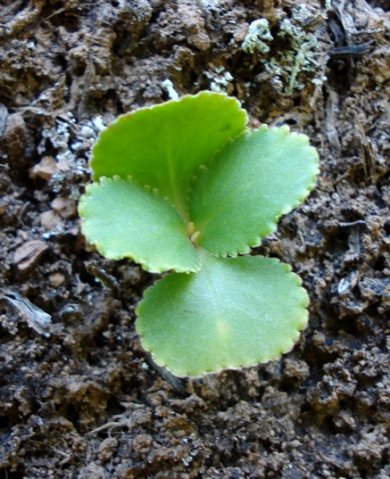Crassula saxifraga

Author: Ivan Lätti
Photographer: Judd Kirkel Welwitch
Crassula saxifraga, sometimes commonly called the tutu stonecrop and previously scientifically Septas globifera, is a tuberous perennial, a resprouting geophyte that reaches from 5 cm to 25 cm in height.
It grows one or two pairs of nearly round, thin-textured leaves with scalloped margins. The virtually unstalked, slightly fleshy leaves are about 3 cm wide and sometimes wider than long. The lower surfaces may be green or purple. The blades are sometimes still developing at bloomtime.
Several nodding flowers grow in a loose umbel at the tip of a slender peduncle above the leaves. The usually white, sometimes pink flowers are tubular with five out-curved, pointed petals. Finger-like, pink-purple sepal lobes clutch the back ends of the corollas. A flower is about 8 mm long.
The specific name, saxifraga, is the name of a plant genus occurring widespread mainly in the northern hemisphere, not in Africa. The name reflects similarity between the leaves of some of the species and those of C. saxifraga.
The species distribution is in the Northern Cape from the Richtersveld to the Western Cape and the Eastern Cape as far as Gqeberha.
The habitat is sheltered, seasonally damp, south-facing fynbos slopes, the plants often found in rock crevices. The habitat population is deemed of least concern early in the twenty first century (Euston-Brown and Kruger, 2023; Manning, 2007; iNaturalist; http://redlist.sanbi.org).

